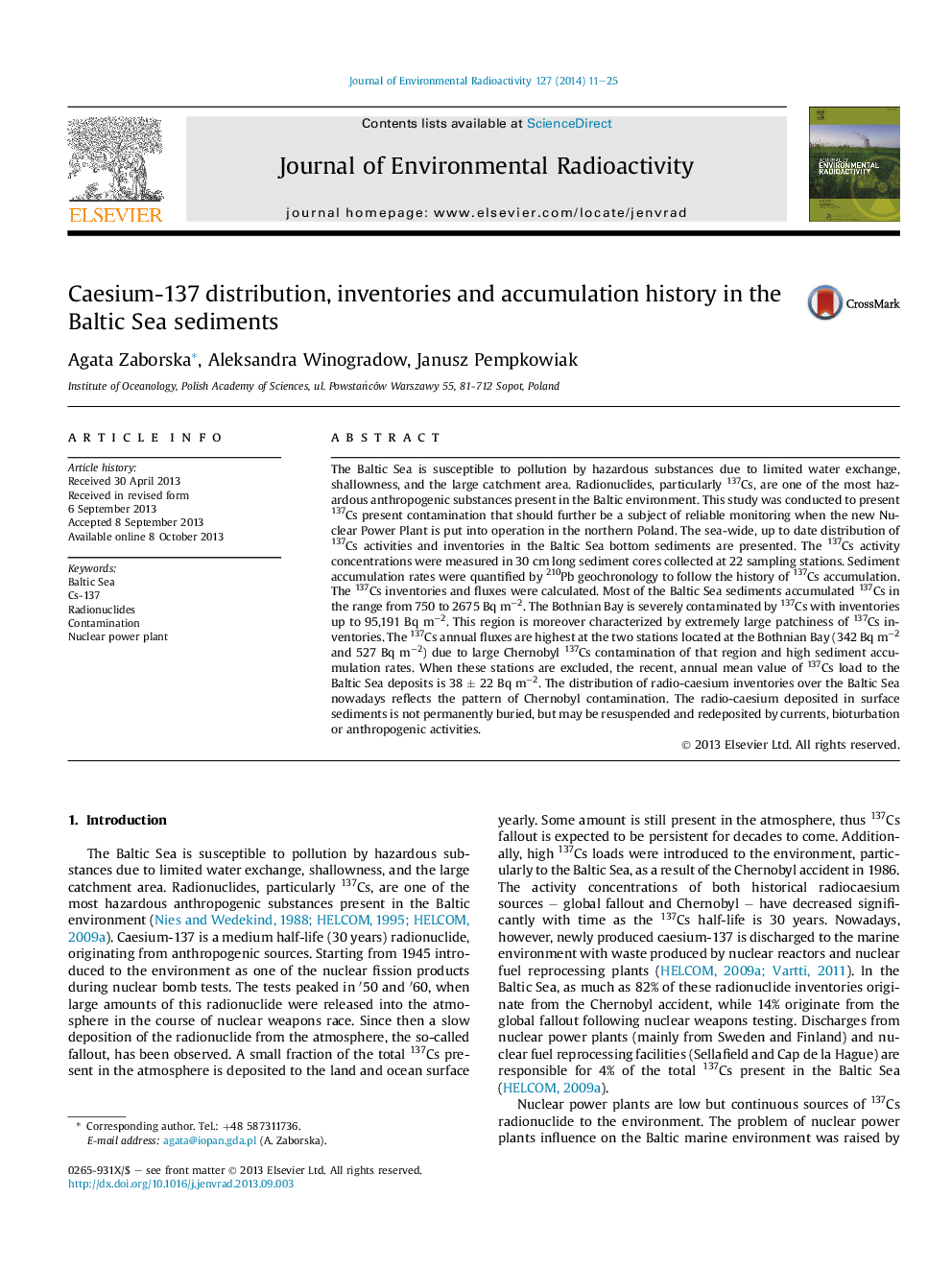| Article ID | Journal | Published Year | Pages | File Type |
|---|---|---|---|---|
| 8083156 | Journal of Environmental Radioactivity | 2014 | 15 Pages |
Abstract
The Baltic Sea is susceptible to pollution by hazardous substances due to limited water exchange, shallowness, and the large catchment area. Radionuclides, particularly 137Cs, are one of the most hazardous anthropogenic substances present in the Baltic environment. This study was conducted to present 137Cs present contamination that should further be a subject of reliable monitoring when the new Nuclear Power Plant is put into operation in the northern Poland. The sea-wide, up to date distribution of 137Cs activities and inventories in the Baltic Sea bottom sediments are presented. The 137Cs activity concentrations were measured in 30 cm long sediment cores collected at 22 sampling stations. Sediment accumulation rates were quantified by 210Pb geochronology to follow the history of 137Cs accumulation. The 137Cs inventories and fluxes were calculated. Most of the Baltic Sea sediments accumulated 137Cs in the range from 750 to 2675 Bq mâ2. The Bothnian Bay is severely contaminated by 137Cs with inventories up to 95,191 Bq mâ2. This region is moreover characterized by extremely large patchiness of 137Cs inventories. The 137Cs annual fluxes are highest at the two stations located at the Bothnian Bay (342 Bq mâ2 and 527 Bq mâ2) due to large Chernobyl 137Cs contamination of that region and high sediment accumulation rates. When these stations are excluded, the recent, annual mean value of 137Cs load to the Baltic Sea deposits is 38 ± 22 Bq mâ2. The distribution of radio-caesium inventories over the Baltic Sea nowadays reflects the pattern of Chernobyl contamination. The radio-caesium deposited in surface sediments is not permanently buried, but may be resuspended and redeposited by currents, bioturbation or anthropogenic activities.
Related Topics
Physical Sciences and Engineering
Energy
Nuclear Energy and Engineering
Authors
Agata Zaborska, Aleksandra Winogradow, Janusz Pempkowiak,
